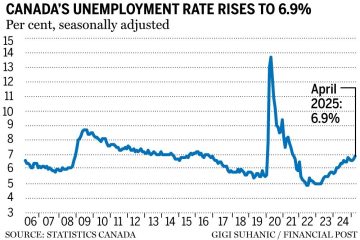An Overview of Current Job Trends in Canada

Introduction
As Canada gradually reemerges from the economic impacts of the COVID-19 pandemic, job trends have become increasingly critical to understanding the country’s economic recovery. Employment insights not only reflect the health of the economy but also offer a glimpse into the shifting demands and opportunities across various sectors. As of October 2023, it is essential to examine the state of jobs in Canada to see which fields are thriving and how workers are adapting to a changing labor market.
Current Employment Landscape
According to Statistics Canada, the national unemployment rate stands at 5.7%, a subtle decrease from last year. While this represents progress, some sectors continue to feel the strain of labor shortages, particularly in healthcare, technology, and skilled trades. In the technology sector alone, job postings have surged by 25% compared to 2022, driven by increased digital transformation initiatives by businesses.
Key Areas of Growth
Healthcare remains a significant employer, with roles such as nurses and personal support workers being in high demand. The Ontario government has announced new initiatives aimed at attracting and training healthcare professionals to meet these growing needs. Meanwhile, the renewable energy sector is also witnessing robust growth, as the government pushes towards sustainability and net-zero emissions goals.
Remote Work and Its Implications
Another considerable shift has been the rise of hybrid and remote work arrangements, which have changed employee expectations regarding work-life balance. A recent survey indicated that 74% of Canadians prefer a flexible work environment. This transition is prompting many employers to rethink their workplace policies and adopt more flexible arrangements to attract and retain talent.
Challenges in the Job Market
Despite these positive trends, challenges remain. Young job seekers, particularly those fresh out of university, face difficulties breaking into the job market as employers increasingly look for experienced candidates. The government is exploring new programs that can bridge this gap, such as internships and apprenticeships along with partnerships with educational institutions.
Conclusion
The job market in Canada continues to evolve, characterized by growth in specific sectors and a persistent demand for flexibility. As we look towards 2024, it is crucial for job seekers and employers alike to stay adaptable and informed about these trends. Overall, a focus on training, development, and embracing new work models will be key to navigating the current landscape, ensuring that both the workforce and economy remain resilient.









